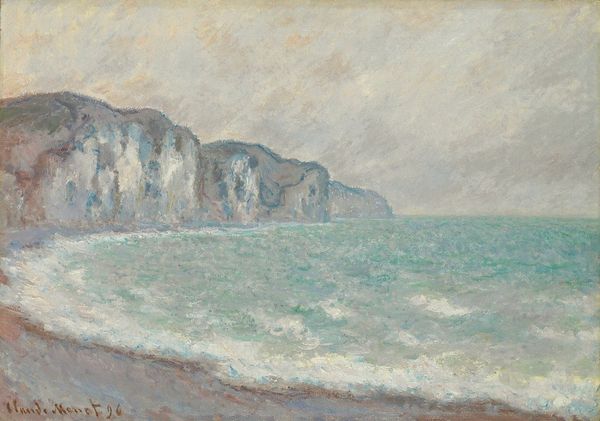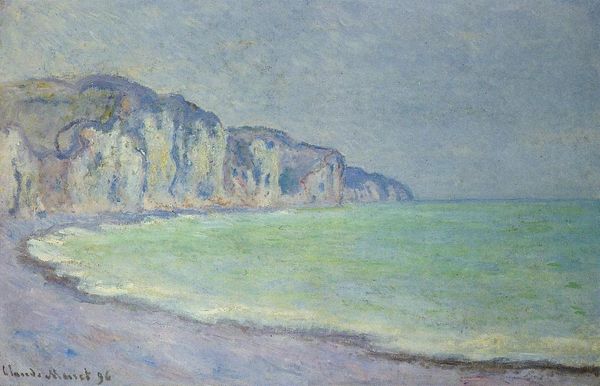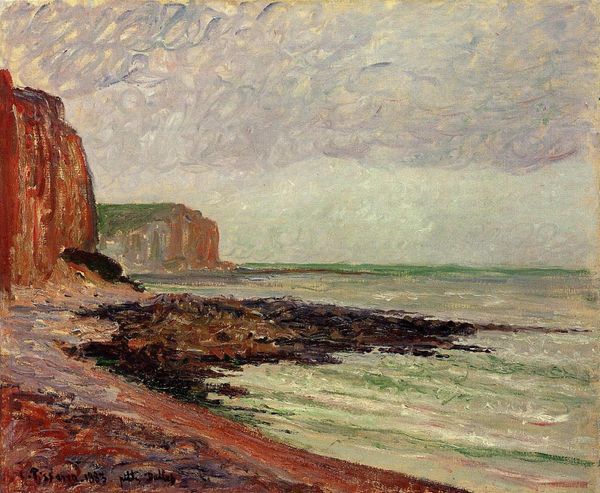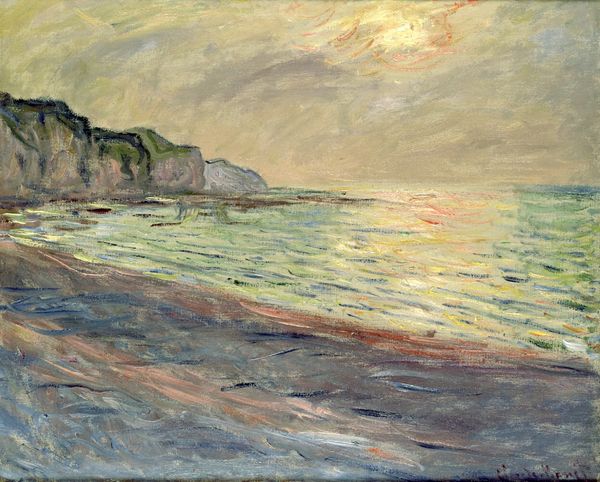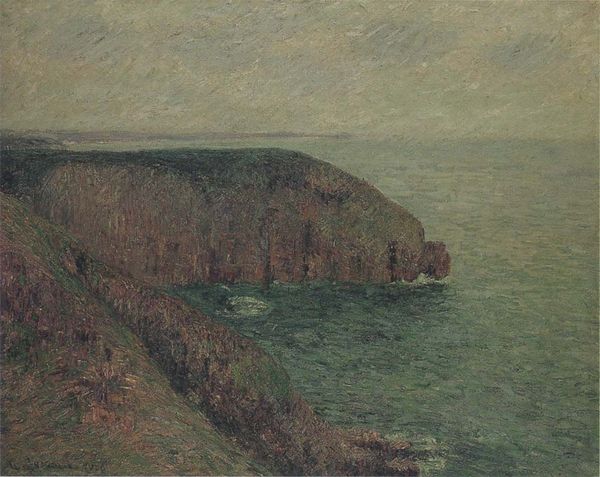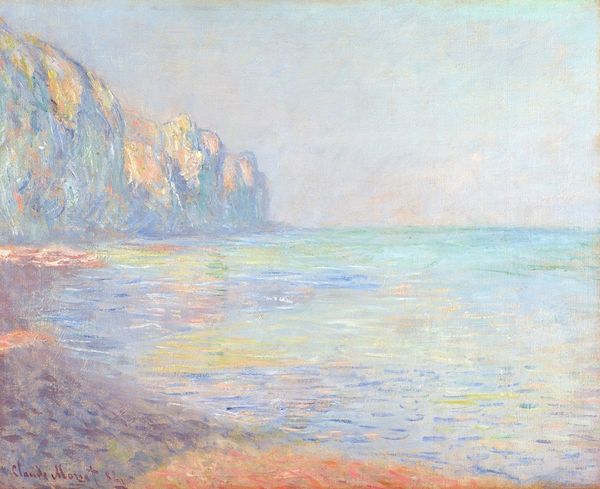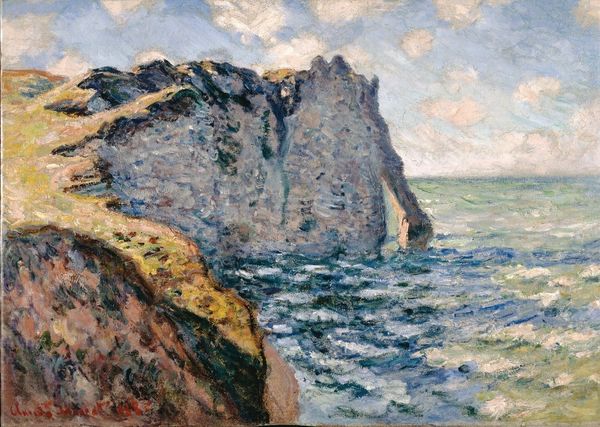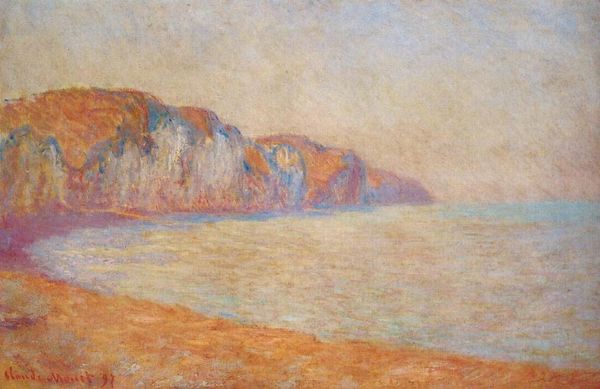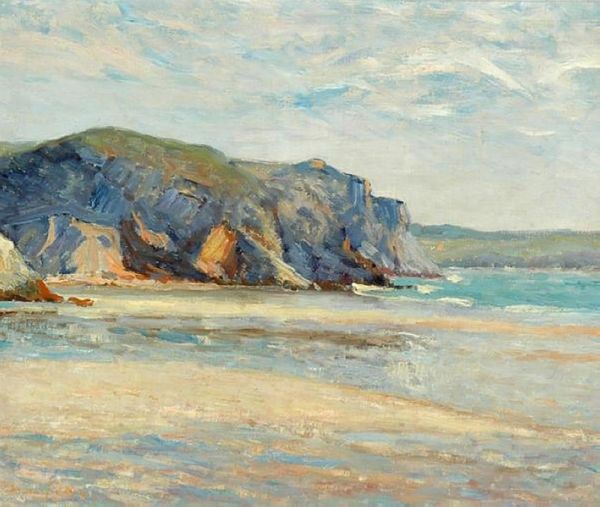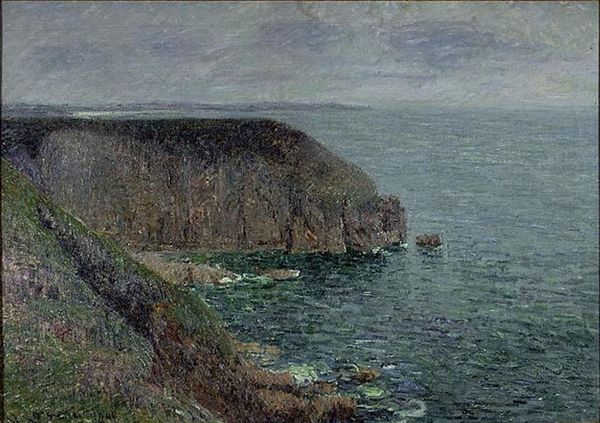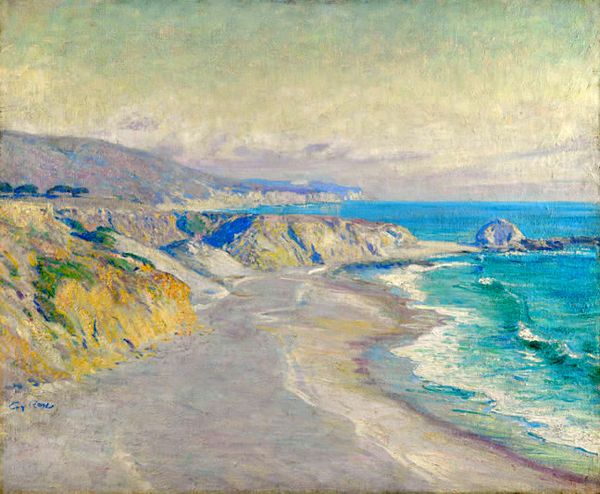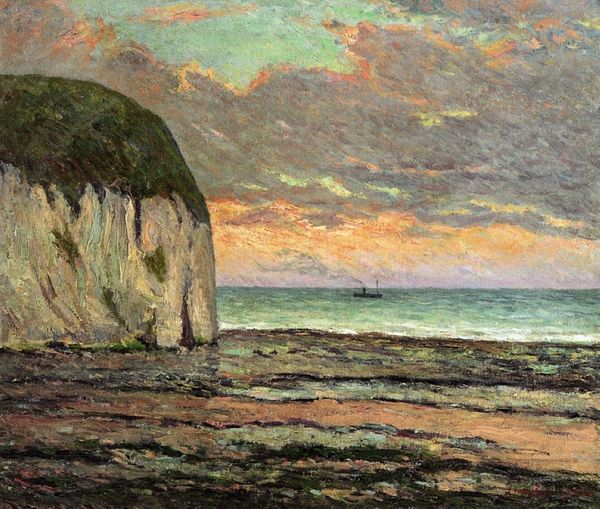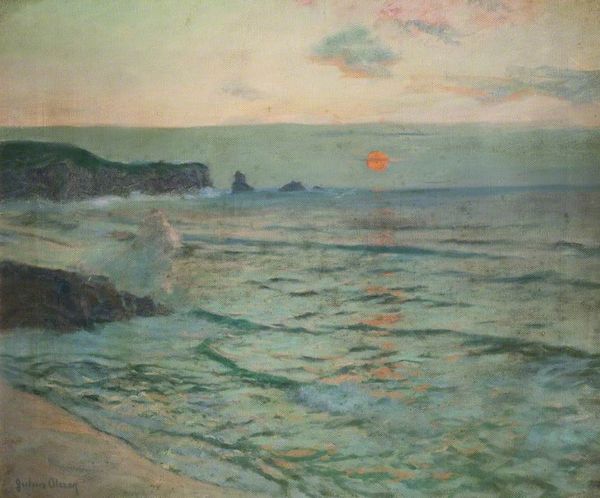
painting, plein-air, oil-paint
#
sky
#
painting
#
impressionism
#
plein-air
#
oil-paint
#
landscape
#
impressionist landscape
#
oil painting
#
ocean
#
mountain
#
sea
Copyright: Public domain
Curator: We're looking at "Cliffs at Sunset," an oil painting, by Maxime Maufra. Editor: There’s something quite somber about it, isn’t there? That gray palette dominating everything – the sky, the water… the light struggles to break through. Curator: Maufra was a key figure in the Post-Impressionist movement. The work certainly embodies the era's concerns, breaking from academic painting traditions towards capturing fleeting moments of natural light and atmosphere. It also represents plein-air painting in depicting the landscapes, reflecting a shift where artists moved outside of the studio to experience the natural setting firsthand. Editor: The thick brushstrokes – you can really see the hand of the artist at work here, almost like troweling on plaster, which speaks to the labor involved. The way the cliffs are rendered feels substantial, grounded. One almost gets the sensation that Maufra was invested in capturing the material nature of the cliffs. Curator: And there's also that romantic undertone prevalent in many Impressionistic and Post-Impressionistic landscapes; it depicts how the burgeoning urbanity redefined humans' connection to nature. Editor: Exactly. This wasn't just about pretty pictures. I'm particularly struck by the brushstrokes that suggest water, or perhaps the light dancing on the water’s surface— the work itself holds materiality that shifts between fluidity and something much more robust, grounded in reality. Curator: Absolutely. Consider the societal shifts in art production at the time. There was growing art market, driven by a burgeoning middle class who could now collect works, meaning an increased importance around landscapes. These paintings often functioned as status symbols but, on the other hand, gave more freedom to artists as the art scene gradually emancipated from commissions. Editor: I agree, though one also must think about where the materials were coming from, the costs involved, and what it signified that certain segments of the population were excluded. Curator: Well, it seems to be we have approached the subject in multiple fascinating lights! Editor: Yes! We looked closely at its aesthetic aspects and how it intertwines with socioeconomic contexts, which has made me appreciate it even more.
Comments
No comments
Be the first to comment and join the conversation on the ultimate creative platform.
